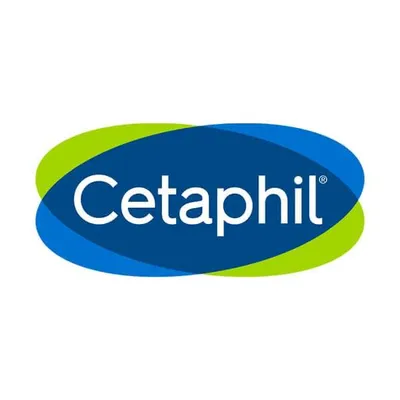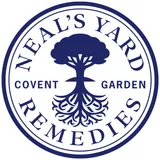
Cetaphil
Learn more about our scoring →
About Cetaphil
Cetaphil operates as a dermatologist-developed skincare brand under pharmaceutical giant Galderma, positioning itself within the clinical skincare segment that bridges medical and consumer markets. The brand's 75-year legacy centers on gentle cleansers and moisturizers formulated for sensitive skin conditions, establishing significant market presence through dermatologist recommendations and mass retail availability including Target distribution networks.
Sustainability performance reflects the complex dynamics of pharmaceutical parent company operations, with notable achievements in manufacturing efficiency and ingredient reformulation balanced against traditional industry practices regarding animal testing and supply chain transparency. The brand's environmental initiatives demonstrate genuine operational improvements including substantial renewable energy adoption and water reduction programs, while social impact efforts focus on supporting children with skin conditions through sustained charitable partnerships.
Galderma's ownership provides both resources for sustainability advancement and constraints from pharmaceutical industry regulatory requirements, particularly regarding animal testing policies in international markets. This corporate structure influences the brand's sustainability trajectory, creating opportunities for environmental innovation while maintaining conventional approaches to product safety verification and global market compliance requirements.
The Good Stuff
Where Cetaphil appears to be making meaningful progress. We cross-referenced these findings with multiple independent sources.
Manufacturing Climate Leadership
Factories operate on 95% renewable electricity with documented 60% carbon dioxide reduction and 33% water consumption decrease per ton of product since 2010
Clean Formula Reformulation
Core products reformulated with readily biodegradable formulas removing parabens, sulfates, and animal-origin ingredients while maintaining dermatologist-recommended gentleness
Camp Wonder Community Partnership
Sustained charitable commitment providing $1.5 million funding and over 50,000 products to support children with skin diseases through specialized camp programs since 2012
The Reality Check
Areas where the publicly available data gets murky, incomplete, or concerning. We're transparent about the limitations of our analysis.
Animal Testing Policy Gaps
Permits animal testing when required by law including Chinese market compliance, without certification from recognized cruelty-free verification programs
Biodiversity Initiative Absence
No documented programs, partnerships, or funding commitments for wildlife habitat restoration or biodiversity conservation despite environmental sustainability focus
Supply Chain Transparency Limitations
Lacks independent audit verification and traceability data for labor practices and sustainable sourcing of animal-derived ingredients despite high-level ESG commitments
Cetaphil's
Impact Aura
A visual representation of Cetaphil's positive impact
across People, Planet and Animals
Each colored area represents the brand's performance in that sustainability category. The size and intensity of each blob corresponds to their score—larger, more vibrant areas indicate stronger performance.
Our Research
Key findings from our comprehensive analysis of Cetaphil's sustainability performance across People, Planet & Animals impact.
Positive Impact on People
Research Highlights
- Reformulated core products with readily biodegradable formulas free of parabens, sulfates and animal-origin ingredients
- Ingredient safety improvements verified through documented reformulation initiatives removing problematic components
- Community impact demonstrates $1.5 million donated and over 50,000 products to Camp Wonder children's skin disease camp since 2012
- Labor practices lack independent verification through recognized certification programs like Fair Trade or SA8000
- Supply chain transparency limited to high-level ESG goals without independent audit or traceability data
Evidence Strength
Strong documentation for ingredient reformulation and social impact initiatives, limited verification for labor and supply chain standards
Positive Impact on Planet
Research Highlights
- Manufacturing operations achieve 95% renewable electricity usage with significant environmental impact reductions
- Carbon footprint reduced by 60% and water consumption decreased by 33% per ton of product since 2010
- Water stewardship demonstrates recycling and reuse systems in manufacturing processes
- Packaging innovations include mono-material recyclable containers and renewable paper-based materials
- Biodiversity protection programs absent from sustainability initiatives and public commitments
Evidence Strength
Excellent documentation for climate action and water management, comprehensive gaps in biodiversity protection
Positive Impact on Animals
Research Highlights
- Animal testing policy allows testing when required by law including markets like China
- Cruelty-free certification absent from recognized third-party verification programs
- Product formulations show partial transition away from animal-origin ingredients in some reformulated lines
- Wildlife conservation funding and habitat restoration programs not documented in sustainability disclosures
- Sustainable sourcing verification lacking for animal-derived ingredients like sodium tallowate
Evidence Strength
Clear documentation of animal testing policies and ingredient sourcing, comprehensive verification of certification absence
See the Receipts
We don't just make claims—here are the official certifications that prove Cetaphil's sustainability commitments.
Frequently Asked Questions
Is Cetaphil sustainable?
Cetaphil demonstrates strong environmental sustainability performance through manufacturing innovations including 95% renewable electricity usage and significant reductions in carbon emissions and water consumption. The brand shows commitment to cleaner formulations by removing parabens and sulfates, though sustainability performance varies across different impact areas with gaps in biodiversity protection and animal testing policies.
Is Cetaphil cruelty-free?
Cetaphil is not certified cruelty-free and permits animal testing when required by law, including for market access in countries like China. The brand lacks certification from recognized third-party cruelty-free verification programs, though some product formulations have been reformulated to exclude animal-origin ingredients.
What makes Cetaphil environmentally friendly?
Cetaphil's environmental initiatives include substantial renewable energy adoption with 95% renewable electricity in manufacturing, 60% carbon dioxide reduction, and 33% water consumption decrease per ton of product. The brand has also updated packaging to include mono-material recyclable containers and renewable paper-based materials.
Does Cetaphil support social causes?
Cetaphil demonstrates social impact through sustained partnership with Camp Wonder, a program supporting children with skin diseases. Since 2012, the brand has contributed $1.5 million in funding and donated over 50,000 products to support specialized camp programs for affected children and families.
Are Cetaphil products clean beauty?
Cetaphil has reformulated core products to remove parabens, sulfates, and animal-origin ingredients, creating readily biodegradable formulas that align with clean beauty principles. However, the brand continues to use some petrochemical derivatives and lacks comprehensive third-party safety verification across all product lines.
Is Cetaphil owned by a sustainable company?
Cetaphil is owned by Galderma, a pharmaceutical company that has implemented environmental initiatives including renewable energy adoption and carbon reduction programs. However, as a pharmaceutical parent company, Galderma operates within industry constraints regarding animal testing and regulatory compliance that influence sustainability practices.
What are Cetaphil's biggest sustainability challenges?
Cetaphil faces significant challenges in animal welfare policies due to animal testing requirements in certain markets, absence of biodiversity conservation programs, and limited supply chain transparency verification. These gaps contrast with the brand's stronger performance in manufacturing environmental practices and ingredient reformulation initiatives.
Ready to Shop Cetaphil?
Find Cetaphil products through our trusted retail partners
The Bottom Line
Cetaphil demonstrates genuine environmental leadership through manufacturing innovations and ingredient reformulation while facing substantial challenges in animal welfare policies and biodiversity protection. The brand's sustainability performance reflects both pharmaceutical industry constraints and opportunities for meaningful impact in clinical skincare markets.
Compare Brands
See how Cetaphil stacks up against similar brands


